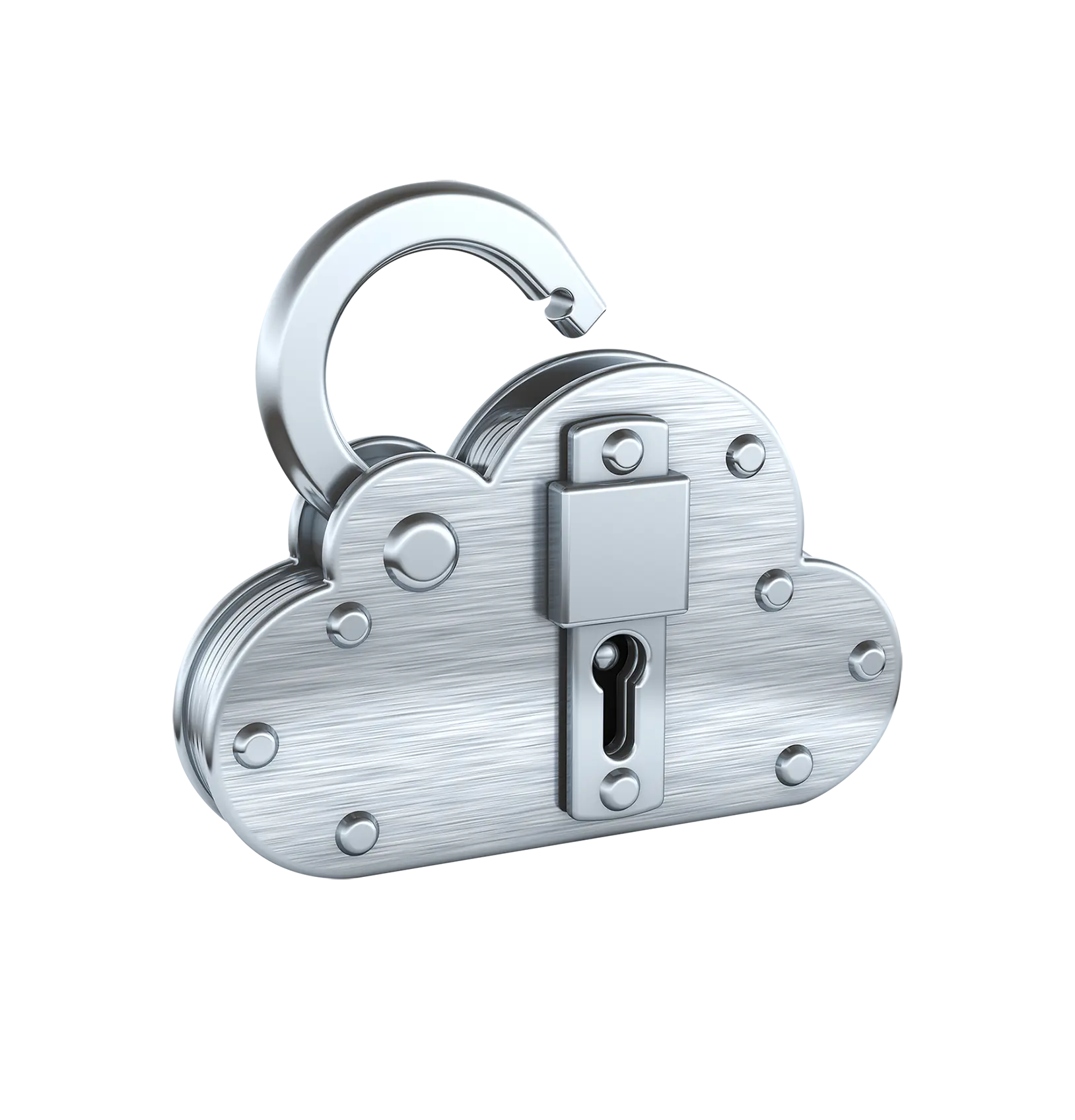Featured in this post
The Real Difference Between On-Premise and Cloud ERP Solutions
The Real Difference Between On-Premise and Cloud ERP Solutions

While it can be daunting, making the decision to implement enterprise resource planning (ERP) software is the first step in the right direction to effectively manage your business and begin your digital transformation journey.
With the right ERP on your side, you can make smarter business decisions, increase collaboration and streamline processes including inventory management, project management and manufacturing—all using one system, providing a single-source of truth across your entire business.
Now that you've made that critical first step, you have to figure out exactly what kind of ERP you need. One of the biggest things to consider here is how you want your solution to be implemented:
On-premise ("on-prem") - the traditional, on-site installation
In the cloud - the increasingly popular choice among manufacturers, provided remotely as "Software as a Service" (SaaS)
Choosing which implementation method you prefer will involve many factors and is a matter of what will work best for your company and provide wide, reliable accessibility for your employees. A few questions to consider as you begin your selection process include, How large is your company’s IT department? Are you willing to relinquish architecture control? How much are you able to spend upfront? Or, over time with monthly or annual fee structures?
But don't worry if you don't have the answers to all those yet. In this blog, we'll provide the information and platform details to help you decide what's the best fit for your business requirements.
Even with more and more manufacturers like you shifting to cloud ERP, it is still critical to properly weigh the options of cloud vs on-prem for your software deployment as both have their own benefits and drawbacks. That way you can be sure you're making an informed decision that will serve your business best, both now and in the future.
To help with this process, we'll dive deeper into both software models below and explore the key factors you should be considering before choosing a cloud or on-prem ERP implementation, including:
Price models
Implementation timeline
Security practices
Performance and accessibility
Upgrades and enhancements
But first, let's jump in with definitions of each ERP software implementation and discover their similarities and differences. Welcome to what we call the Ultimate Guide to Cloud ERP vs On-Premise.

What Is On-Premise Software?
On-premise software, in a nutshell, can be explained as a company hosting its software in house. Instead of it being “in the cloud,” served via the internet and using a vendor supplied hosted system, on-prem software is typically maintained "in house" or "on location" with the server hosted at the company’s physical office space.
Once placed into a company’s network infrastructure through its IT department, the on-prem software runs from your own network, all under your control—or under your "virtual roof" so to speak. You maintain full control—and responsibility—over your system and all of the maintenance and security that goes into it.
Typically, an on-premise solution is not accessed through the internet, but the software would require in-person office network connections or perhaps a VPN tunnel for encryption with more sophisticated network configurations allowing offsite or remote connections.

What Is Cloud Software?
With more organizations focusing on digital transformation initiatives and looking to increase agility and mobility in their operations, most of us have heard the phrase “in the cloud,” when discussing technology and software applications. But what does it really mean?
Cloud software is used as if it were installed in the servers of your own office. But, instead of on your local network, it is hosted, widely and readily available by an outside provider and accessed on-demand through any internet connection. This means your staff can access your cloud software from wherever they are using only a web-browser.
There are two salient questions for your organization to answer before even considering moving to a cloud-based ERP installation:
Will Your Data Still Be Yours To Control?
Moving data to the cloud means that some amount of control must be given over to the application provider. There is no way around it; that’s just how the system works. When searching for a cloud ERP system, you'll need to ensure you are just as confident in the provider as you are the functionalities of their software. Asking questions such as, What would happen if a data breach was to occur? What is their protocol for compromised security? Would data from other businesses be stored on the same server as your data?, you'll be able to better evaluate each provider you're considering.
What Are the Regulations for Your Industry Field?
You must also be careful to make sure that your vendor can adhere to any regulatory requirements, especially because certain industries can face heavy fines for non-compliance. Make sure vendors know exactly what your requirements are, and can guarantee that you are always in compliance.
Additionally, some organizations may be concerned with the security of their data in the cloud. It’s important to keep in mind that cloud ERP systems are extremely secure, and data may actually be far more secure than it would be in-house. However, there are situations where security might still be a valid concern. And, in the end, it's your responsibility to ensure your data stays safe and secure.

Cloud vs On-Prem Model Comparisons for Data Management and Pricing
If you’ve done even a quick Google search, you’ll already know there are an overwhelming number of options when choosing ERP software, meaning the decision will require a significant investment in research and planning time.
Therefore, determining your price point up front can save you time and provide clarity on objectives, potentially letting you immediately eliminate solutions—and their vendors—that are too costly. Bear in mind, however, that those time and cost savings will be for nothing if you must replace the software shortly down the road. So remember when evaluating based on price point, that selecting a future-proof system, that can grow and evolve with the needs of your business, may be the best long-term financial choice.
With that in mind, let's consider two major differentiators in the battle of "on-prem vs cloud"—the areas of data management and pricing.
Cloud ERP Data Management
In the cloud model, your data is hosted remotely in an environment managed by your vendor—removing any hardware or IT demands on your business. This method of deployment saves your company capital as you do not need to be concerned with purchasing expensive hardware or hiring and supporting a full-time, comprehensive IT staff. Instead, you simply access the solution through the internet and use it from there.
When it comes to any data management concerns, you may find some vendors offer both single and multi tenant instances. With single tenant offerings, only your software is running on that particular infrastructure, where as in multi tenant, the infrastructure is shared between multiple customers. Although, as you would imagine, single tenant instances usually come with a higher price tag for the peace of mind.
Cloud ERP Pricing
Generally, the initial costs of implementing cloud software are far lower than on-prem models where you need to purchase the perpetual license for the software up front. This presents less risk and grants you far more flexibility if you need to replace your ERP software down the line. However, you will need to take into consideration that there are ongoing fees for the duration that you use the cloud software, meaning you may eventually pay more over time than if you had chosen an on-prem deployment.
Additionally, in many cases, selecting a cloud-based ERP solution provides companies with a quicker and less expensive implementation, again lowering the the initial capital required and reducing the barrier to investment.
Quick Summary
This cloud model is ideal for smaller companies that do not have a robust, in-house IT infrastructure capable of hosting and maintaining an ERP system, and is becoming more popular with larger organizations that favor the agility and additional benefits that cloud software offers. So evaluating the various options on offer—such as single or multi tenant—is critical, no matter the size of your company. You may even find vendors who provide a mixed deployment, which combines aspects of a hosted solution and an on-premise offering.
On-Premise ERP Data Management
The traditional on-premise deployment model enables you to purchase the software and pay for maintenance and support the system in-house. You own it, you have it on your server and you are in control of any and all upgrades, maintenance and administration. There’s no questioning data security or access rights when you’re in control of your own database and software solution.
On-Premise ERP Pricing
An on-premise deployment comes in at a significantly higher upfront cost, but licenses and implementation are usually a one-time-only fee, with the maintenance and support being a small percentage ongoing, however, sometimes optional. Choosing on-premise deployment is a long-term investment. This means over time, if you stick with the same ERP provider, you will pay less to the vendor than a cloud implementation, but it’s also important to factor in operational costs such as the necessary IT resource or energy requirements of running in-house servers.
Quick Summary
A key reason why many companies want their enterprise resource planning system on-premise is because they are completely in control of their data and can arrange for the security to meet regulations from HIPAA, the government or any other regulatory organization. Larger companies with bigger budgets and support teams are more likely to pick this model, given the cost benefits long-term. However, anyone that can afford it can find it a worthy investment in the long run.

Cloud vs On-Prem Model, Pros and Cons
There are, of course, advantages and disadvantages to both on-prem and cloud deployments, so even if you already have a preference, you should still spend time properly evaluating all the pros and cons before making your final decision.
For example, there's no doubt that one of the biggest benefits of cloud ERP is that it provides businesses with flexibility in terms of instant accessibility since the internet is so readily available.
But, let's step back for a moment and remember that the reliability and speed of a business’s internet provider is a crucial factor to weigh in any exploration of cloud implementations—after all, when your connection is down, or terribly slow, even a solid cloud hosting infrastructure becomes unusable.
That's how quickly an obvious benefit of the best cloud ERP can become a challenge or even a setback. In a similar fashion, your on-prem ERP solution would still connect from your network without the internet provider, but what if the power went out? You would need a generator or some power redundancy plan for your server room environment in case of an outage.
Those are realistic "worst case" scenarios, but again, consideration and planning are required to mitigate the challenges of any solution. That's why we've listed several pros and cons below for each ERP implementation model so that you can be confident in your decision—making the right choice for your business, first time.
The Pros and Cons of Cloud ERP Software
As the popularity of cloud software and digital transformation initiatives has soared, more and more manufacturers are turning to the cloud for their ERP implementations. And as you'll see from the list of benefits below, there's good reason to. But to ensure you're making the right decision for your business you'll also need to weigh the potential disadvantages of this model. So, let's dive in.
Cloud ERP Pros
Fewer IT requirements. With a cloud ERP, you do not need to have a server or other IT infrastructure to run the software. You also do not need a true IT staff to manage it, so this will save time and costs since employees can now focus on other parts of the business.
Lower initial investment. With SaaS, instead of paying a large upfront fee, you pay a smaller month-to-month fee. You do not own the software then, but you also do not have to do any work on it as your ERP provider has the responsibility to maintain it.
Quicker deployment. Additional hardware for a business to buy and install is not required with a cloud ERP implementation. Therefore, the time to get “up and running” is greatly reduced with a fast-track, more simplified and streamlined process.
Improved scalability and agility. When manufacturers experience seasonal peaks, fluctuations in company growth, require additional business functionalities or need to meet new regulatory requirements, a SaaS provider can quickly and easily make capacity adjustments, adding software functionality, enabling additional modules and increasing the number of user licenses.
Faster Return on Investment (ROI). Because of the lower up-front costs and typically quicker implementation, companies often experience a shortened timeline for their ROI.
Cloud ERP Cons
Less control. Since the software itself is hosted in the cloud, the security and reliability of the connection are dependent on the cloud service used. Any breakdowns or errors are out of your control to diagnose and fix, so you are at the mercy of your provider if something happens.
Higher long-term costs. If you find a system you like, and use it year after year, the small month-to-month recurring fee will eventually surpass the cost to purchase the system outright.
The Pros and Cons of On-Premise ERP Deployment
As you can imagine, some of the pros and cons of on-premise implementations are the inverse of their cloud counterparts above, but there are some nuances and additional factors that require consideration.
On-Premise ERP Pros
More control of system and data. Since you are hosting the ERP on your server, you are in complete control of what happens with it on a day-to-day basis. Hosting your ERP on-premise gives your business the ability to control all of the data that goes inside of it as well as the security measures needed to access that data.
Less vendor dependency. Operation, updates and customizations are all up to you, so you do not need to rely on anyone else. If your vendor goes out of business for example, you're not left scrambling to find a new host.
More control over security. With an on-prem deployment you are now responsible for the security and monitoring of your data. If you have the relevant IT resources, this is a great benefit as you can be sure of your security. With the local installation, you can even prevent access from the internet for better control.
One-time cost for software purchase. The initial expenditure is a depreciable capital investment, which can be tracked and measured to ascertain ROI. Related maintenance costs can be handled as operational costs of doing business.
Lowest total cost of ownership. If you stay with the same software vendor for a long period, you'll experience only a one-time investment in the ERP software and server hardware rather than making ongoing payments over the length of the contract.
On-Premise ERP Cons
Higher upfront cost. An on-premise ERP will have a higher cost upfront. You pay for the licenses and implementation, which can get pricey based on how many users you have, what configurations you are doing and what data you need to migrate over.
Eventual outdated software. Over time your ERP software will need to be updated to better reflect your needs. Server system platforms also need to be updated or you could face security risks and simply miss out on helpful updates. Upgrades will require additional costs and open you up to increased security risks from code defects. Plus, if you’ve not updated for a while, there could be a chance that your vendor is no longer in business, meaning the search for a new one begins.
Lack of flexibility. With on-prem, the only time users would have access to the software is while on company grounds. Conversely, cloud ERP allows employees to have access anywhere so long as they have access to the internet, creating more opportunities to complete work and update information.
Long implementation period. Finding the right vendor, installing the software and the subsequent training that follows can take up a lot of a business’s time. While these things are necessary with on-prem ERP, it can be time consuming and stops a business from having a smooth ride with their daily processes for a specific period of time.
More IT requirements. You need to have a server and other IT infrastructure in place to support an on-prem ERP. This includes both hardware and software, as well as having at least one quality IT person on site who can help with any concerns.
Key Takeaway
You will need to ask yourself if the benefits of having the ability to access the ERP software without having to install hardware, not ever having to worry about upgrading your ERP system on a regular basis (which can be very expensive) and not having to pay for someone to maintain your system outweigh the benefits of having full ownership, control and responsibility for your software security and data integrity?

Making Your Choice - Does Cloud ERP or On-Prem Suit Your Business Best?
Now we've examined the benefits of both on-premise and cloud ERP implementations as well as the challenges accompanying each, it's time decide what's best for your business.
Evaluating which type of enterprise resource planning software implementation is best for your organization should take into account a range of factors including your short-term objectives, long-term goals, budget constraints, your available IT resource and what will be easiest for your users. While it may seem overwhelming, just remember - there can be no right or wrong answer because every business is unique.
To help simplify, let's review once again in the chart below the high-level benefits of each ERP implementation model.
Making Your Choice: On-Prem vs Cloud, Benefits at a Glance
Bottom-line, your decision may come down to simply budget or preference of an IT Director, however, we don't want to end this blog without one last focus on risk mitigation which goes beyond weighing pros and cons and gets to the heart of the matter: How much risk are you willing to carry?
We often ask the following key risk assessment questions to our customers when considering a cloud migration from an on-prem solution—questions worth sharing as you determine your platform and vendor options. We then score their results against the benchmark for our hosted cloud environment.
ERP Cloud Migration Considerations
How secure is the location of the physical server that runs your critical software solutions?
How would you rate the IT staffing level managing your software ecosystem at your organization?
How ready are your current enterprise security measures to combat data-breach, malware and ransomware attacks?
How would you rate proactive security measures (procedures, audits, documentation, compliance efforts, etc.) deployed at your organization?
How well is your software ecosystem equipped to recovery from disaster and ensure business continuity?
With decades of experience implementing on-prem ERP solutions and now with our flexible cloud deployments on the Software as a Service (SaaS) model, our customers find greater scalability, stronger cybersecurity and enhanced data protection which helps mitigate risks when moving to the cloud. As we have already shared, this configuration requires little to no additional hardware, making the rollout and operation less of a burden on your existing IT and facilities staff.
If you are interested in learning more about Aptean's cloud ERP software offerings, purpose-built for your industry or want to learn more about our full suite of manufacturing software, reach out to us today.
Ready to future-proof your business with cloud software?
We’ve got the industry-leading software and experts to help your business thrive.



 April Matthews | Digital Marketing Lead SEO Specialist
April Matthews | Digital Marketing Lead SEO Specialist